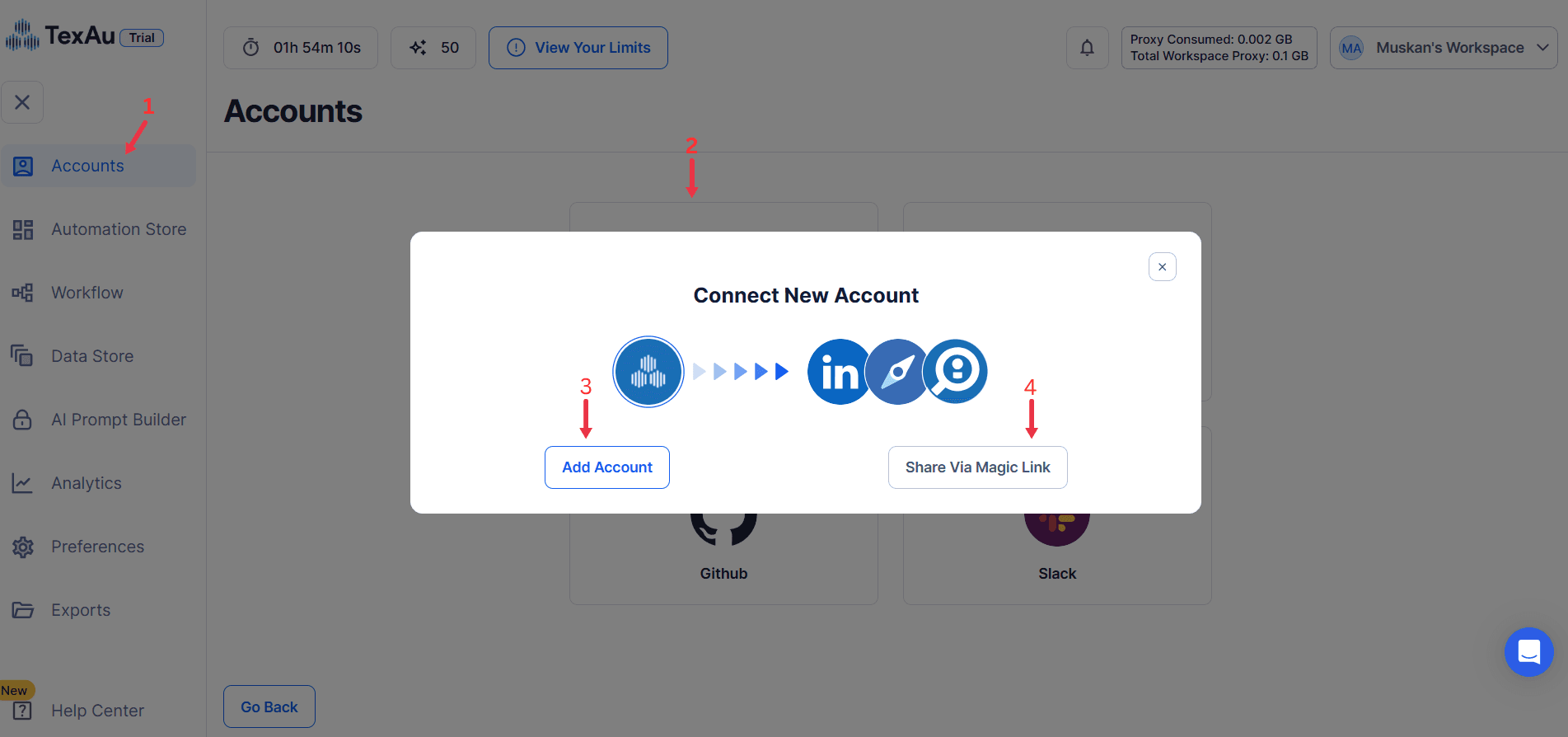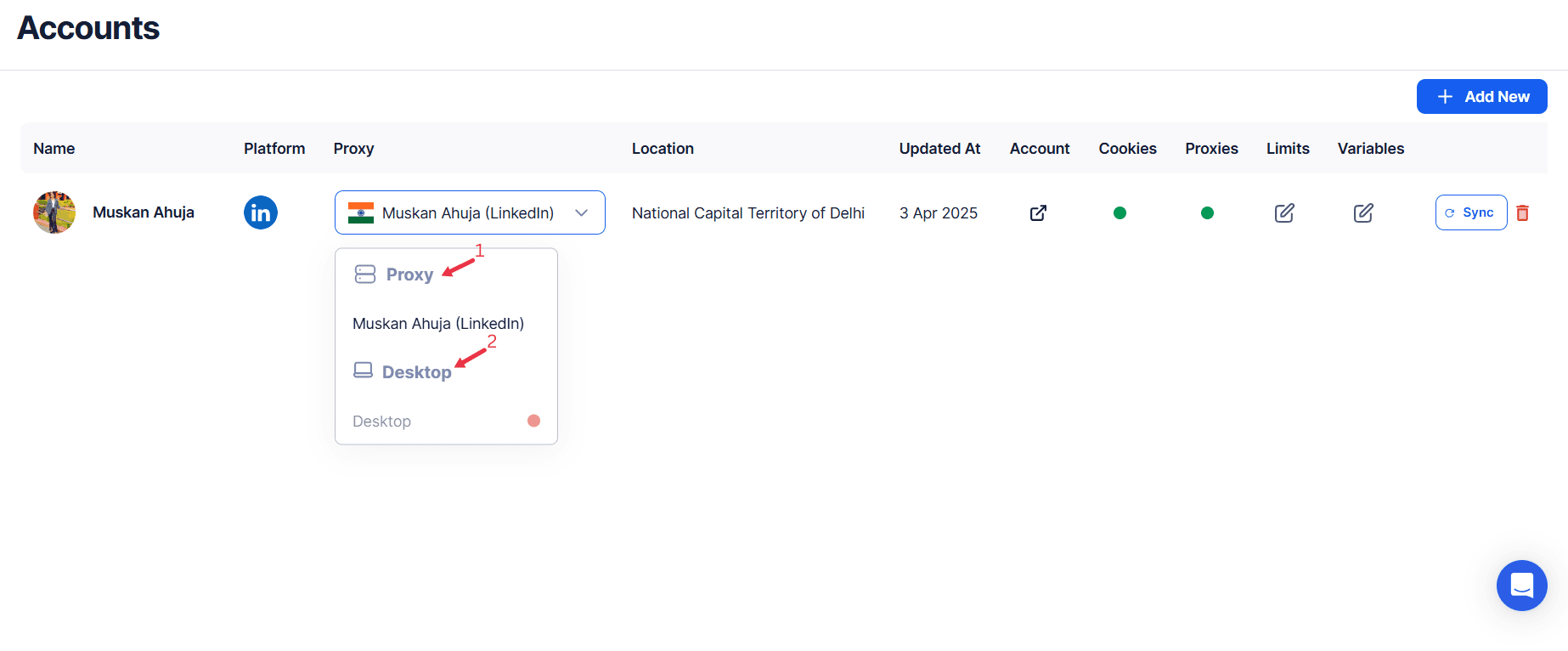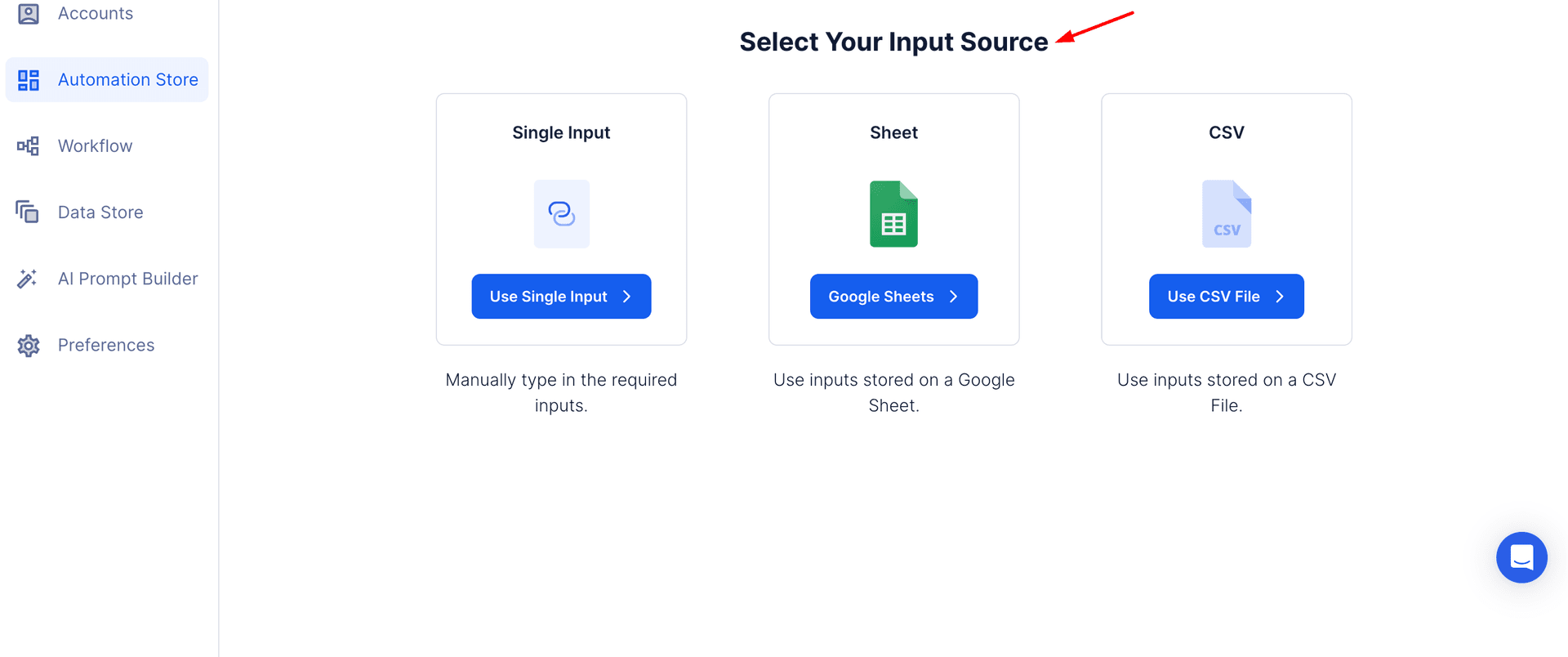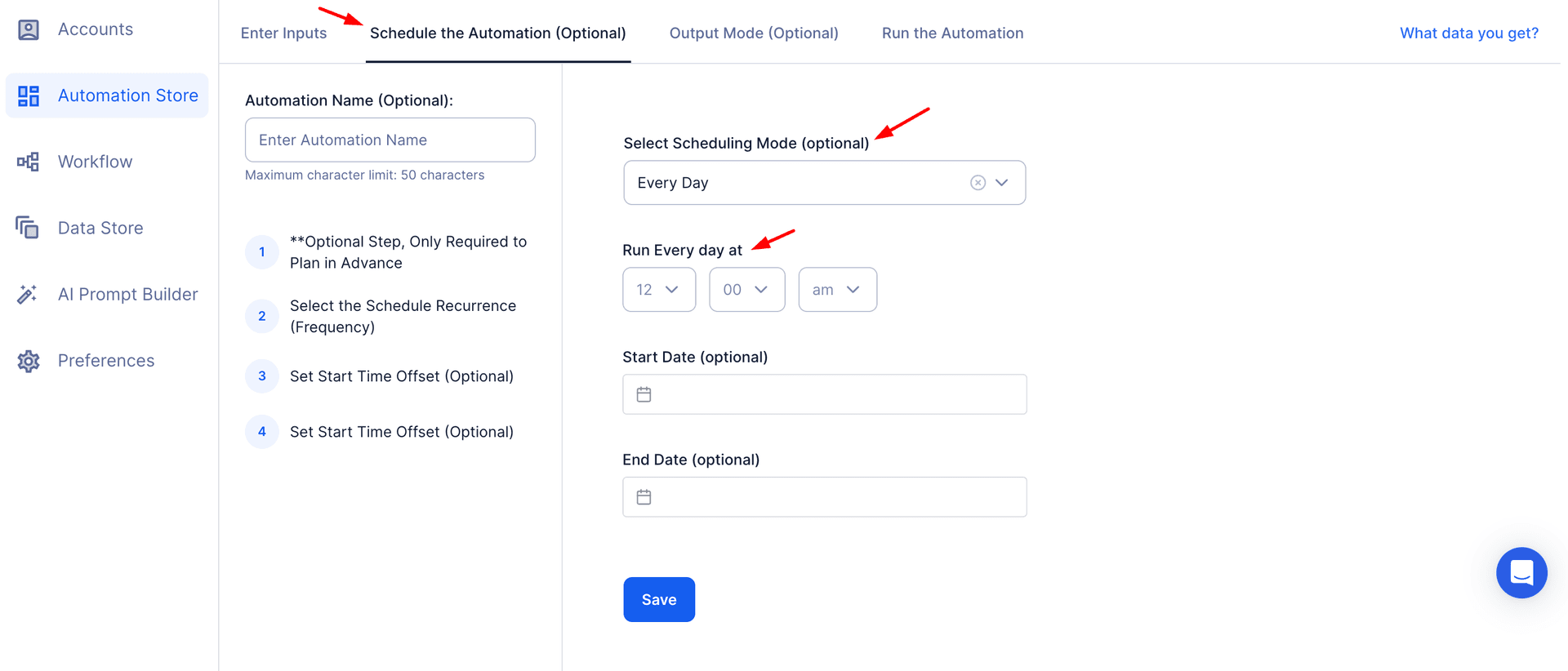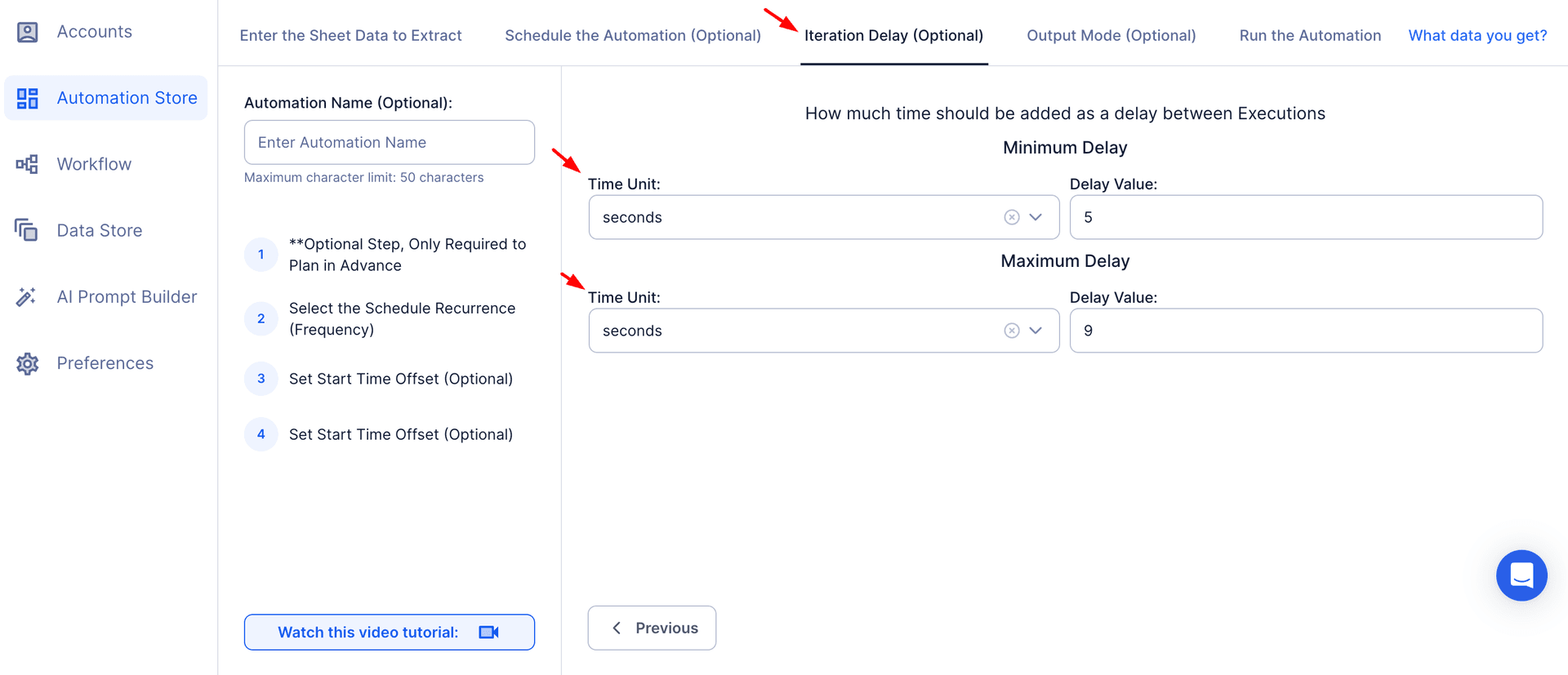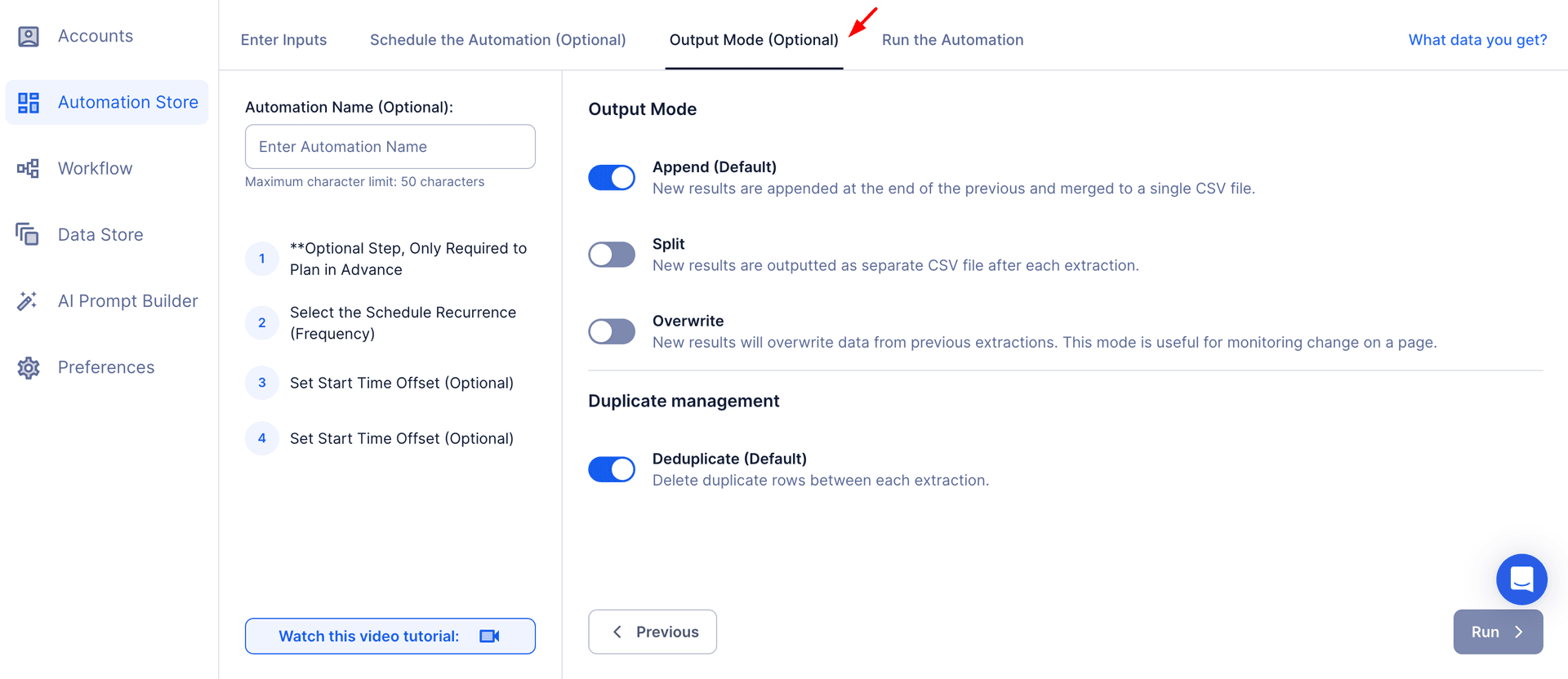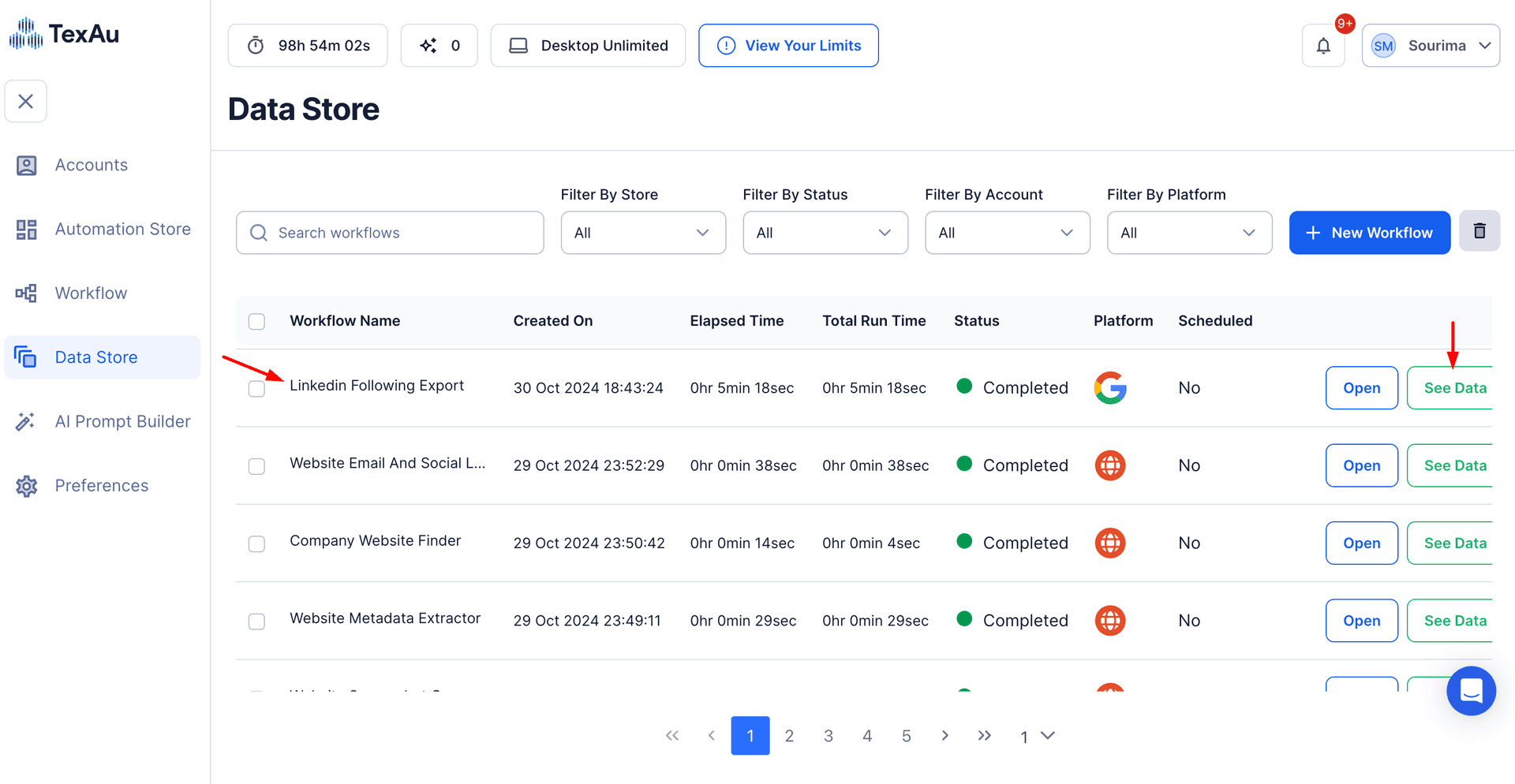LinkedIn is more than just a platform for professional networking—it's a powerful tool for engagement and a rich source of data that can shape your business strategies. It allows users to share insights, exchange ideas, and engage in discussions around industries, topics, and brands. With over 700 million members globally, LinkedIn provides businesses and professionals an opportunity to foster engagement and connect with audiences on a more personal level.
As engagement on LinkedIn continues to grow, one key feature stands out: comments. Whether on a post, an article, or an update, comments allow users to express opinions, share experiences, ask questions, or even promote their own services. These interactions are often the most insightful because they reveal real-time sentiments, concerns, and opinions of professionals across industries.
Extracting LinkedIn comments can provide significant value for businesses seeking to gain deeper insights into their audience. Whether you are analyzing sentiment, tracking engagement trends, or identifying leads, comments are a goldmine of information. TexAu’s LinkedIn Comment Scraper streamlines the process of extracting this valuable data, making it easy to access, organize, and analyze LinkedIn comments efficiently. By automating the extraction of comments from LinkedIn posts, businesses can save time, gain real-time insights, and make data-driven decisions.
In this article, we’ll explore the key features of TexAu’s LinkedIn Comments Scraper, the benefits of extracting comments, and practical use cases where this tool can be invaluable to marketers, recruiters, business development teams, and more.
Challenges Addressed by TexAu
Scraping LinkedIn comments manually can be a daunting and time-consuming task, especially when dealing with large volumes of posts and comments. TexAu’s automation features address several common challenges businesses face in the comment scraping process, including manual analysis limitations, data gaps, and scalability issues. By automating this process, TexAu helps businesses save time, ensure data accuracy, and scale their efforts effortlessly.
1. Manual Analysis Limitations: Overcoming Time and Error Constraints
Manually collecting and analyzing LinkedIn comments is both time-consuming and prone to errors. When scraping comments by hand, it's easy to overlook important details, miss trends, or make data entry mistakes. As the volume of comments grows, so does the complexity of the task. With TexAu’s automated scraping tool, this process is streamlined and more efficient.
How TexAu Helps:
- Automation of Data Collection: TexAu eliminates the need for manual extraction by automatically scraping large volumes of LinkedIn comments, saving hours of work. It allows businesses to focus on the analysis rather than the extraction process itself.
- Consistency and Accuracy: The automated system ensures that data is collected consistently and accurately, reducing the risk of errors associated with manual entry. This accuracy leads to more reliable insights and informed decision-making.
Example:
A marketing team looking to analyze customer feedback on a new ad campaign might manually collect and input comments. However, with hundreds or thousands of responses, this becomes overwhelming. TexAu’s LinkedIn Post Scraper enables them to extract not just comments but also analyze which posts generate the most engagement, making it easier to optimize their content strategy.
2. Data Gaps: Ensuring Comprehensive Data Extraction
Manually collecting LinkedIn comments increases the likelihood of missing valuable insights or creating incomplete datasets. Human error, fatigue, or overlooking comments can lead to gaps in data, ultimately affecting the quality of your analysis. TexAu’s robust scraping capabilities ensure that you capture all the data you need, leaving no gaps in your dataset.
How TexAu Helps:
- Comprehensive Data Capture: TexAu ensures that every comment from a relevant post is extracted, whether it’s from a small post with just a few comments or a viral post with thousands. The tool can scrape data from multiple posts simultaneously, ensuring that you don’t miss out on valuable insights.
- Eliminating Data Bias: By automating the process, TexAu eliminates the risk of data bias, ensuring that every piece of relevant feedback is captured and included in your analysis.
Example:
If you’re tracking engagement on a series of LinkedIn posts promoting your latest product, manually tracking comments might cause you to miss feedback on certain posts or threads. TexAu captures data from all relevant posts, ensuring your analysis includes feedback from every possible source.
3. Scalability: Handling Large-Scale Data Extraction
One of the biggest challenges with manual comment scraping is scalability. As your business grows, so does the volume of LinkedIn posts and comments that need to be analyzed. TexAu’s automation can easily scale to handle large volumes of data, making it an ideal solution for businesses of all sizes.
How TexAu Helps:
- Effortless Scaling: Whether you’re scraping data from a handful of posts or hundreds, TexAu scales to meet your needs. The tool can handle large batches of comments quickly and efficiently, ensuring that businesses can stay on top of engagement without increasing their workload.
- Real-Time Data: TexAu’s ability to scrape data regularly ensures that businesses can handle large datasets and monitor engagement trends in real time.
Example:
A large SaaS company may have dozens of LinkedIn posts running simultaneously, each with hundreds of comments. Manually collecting comments would be impossible at that scale. LinkedIn Message Thread Scraper automates the process of gathering insights from LinkedIn message threads, complementing comment analysis by providing a holistic view of user interactions.
Key Features: TexAu’s LinkedIn Comment Scraper
TexAu offers a comprehensive LinkedIn Comment Scraping solution designed to extract data from LinkedIn posts, articles, and updates quickly and effectively. Here’s a breakdown of the key features that make TexAu’s tool a must-have for professionals seeking to analyze LinkedIn comments:
1. Comprehensive Data Extraction
TexAu enables users to extract a variety of essential data points from LinkedIn comments. These include:
- Commenter Name: The name of the person who left the comment.
- Profile URL: A direct link to the commenter’s LinkedIn profile.
- Comment Text: The content of the comment itself, including any sentiment or feedback.
- Post URL: A link to the post or article on which the comment was made.
- Timestamp: The time when the comment was posted, which can be important for time-sensitive analysis.
Example Scenario:
Imagine you're analyzing a LinkedIn article discussing your latest product launch. You extract comments from users who engaged with the post. By examining the comment text, you gain insight into how your audience perceives the product and whether they are excited or have reservations. The timestamps help you track engagement trends, such as whether certain topics or posts generate more activity at specific times of the day.
2. Customizable Filters
TexAu’s LinkedIn Comment Scraper allows you to apply specific filters to refine the data extraction process. You can filter comments based on:
- Keywords: Extract comments that mention particular words or phrases (e.g., "cloud computing," "AI," "digital transformation").
- Specific Posts: Focus on comments from particular posts that are of interest to your business.
- Industries: Narrow down the extraction based on industry-specific topics or discussions.
- Time Periods: Choose a specific timeframe to analyze comments from particular months, quarters, or years.
Example Scenario:
If you're running a marketing campaign for a new software solution aimed at digital transformation, you can use TexAu’s filters to extract comments that specifically mention "digital transformation" or "AI." LinkedIn School Scraper can complement this by identifying alumni networks engaged in these discussions.
3. Bulk Comment Scraping
TexAu makes it easy to extract comments from multiple posts simultaneously. This bulk scraping capability significantly reduces manual efforts and accelerates the data collection process. Rather than having to scrape comments one post at a time, you can pull data from several posts with just a few clicks.
Example Scenario:
A marketing team launching a series of campaigns across different LinkedIn posts can use bulk scraping to gather comments from all campaign posts at once. Instead of manually tracking each post's comment section, the team can easily extract all comments for analysis in one go. This saves time and ensures that no data is overlooked.
4. Export Formats
TexAu allows you to export the extracted comment data in CSV or Excel formats, which can be easily imported into analytics tools, CRMs, or reporting dashboards. These export options make it simpler for businesses to integrate LinkedIn comment data into their existing workflows.
Example Scenario:
A sales team can export LinkedIn comment data into a CSV file and then import it into their CRM system. By doing so, they can track potential leads who show interest or engage with certain posts, creating a streamlined lead nurturing process.
Benefits of Extracting LinkedIn Comments
The benefits of extracting LinkedIn comments extend beyond just gathering raw data. By analyzing comments, businesses can unlock valuable insights that can drive their marketing strategies, improve customer relationships, and even identify potential leads. Let’s explore some of the key benefits in more detail:
1. Sentiment Analysis
One of the primary reasons to extract LinkedIn comments is for sentiment analysis. Understanding how your audience feels about your brand, products, or services is crucial for refining your messaging and improving customer satisfaction. Sentiment analysis can help you gauge whether comments are positive, negative, or neutral and tailor your future actions accordingly.
Example Scenario:
You post an update about a new feature release for your software on LinkedIn. By analyzing comments through TexAu, you can quickly gauge customer sentiment. Are users excited about the new feature? Do they express concerns or confusion? By identifying and analyzing negative comments, you can take proactive steps to address issues or communicate more effectively with your audience.
2. Content Optimization
LinkedIn comments can reveal valuable information about the types of content that resonate most with your audience. By examining which posts generate the most engagement, you can identify patterns in content that drive positive interactions.
Example Scenario:
If you consistently receive a high volume of comments on posts discussing leadership in the tech industry, it could signal that this is a topic of strong interest to your audience. Armed with this insight, you can tailor future content around leadership themes, ensuring higher engagement.
3. Lead Identification
Comments can also serve as a powerful tool for lead generation. By carefully analyzing comments on posts related to your products or services, you may find potential leads expressing interest or asking questions that indicate a need for your offerings.
Example Scenario:
A commenter on a LinkedIn post about SaaS solutions mentions that they are looking for a tool to automate their workflows. By extracting this comment, you can reach out and offer your SaaS solution as a potential fit. This proactive approach to lead identification helps you capture high-quality leads who are already expressing interest in your industry.
Use Cases: Who Can Benefit from LinkedIn Comment Scraping?
TexAu’s LinkedIn Comment Scraper is beneficial for various professionals across industries. Whether you are in marketing, recruiting, or business development, extracting LinkedIn comments can provide a competitive edge by helping you understand your audience better. Let’s look at some use cases:
1. Marketers
For marketers, LinkedIn comment scraping is an invaluable tool for campaign optimization and audience understanding. By analyzing comments, marketers can identify trending topics, gain feedback on content, and even uncover customer pain points.
Example Scenario:
A marketer running a campaign for a new e-learning platform can use LinkedIn comment scraping to analyze feedback on posts discussing online education. By extracting comments related to specific courses or features, the marketer can optimize future campaigns based on the most frequently mentioned topics.
2. Recruiters
Recruiters can use LinkedIn comment scraping to spot potential candidates who are actively engaging in conversations related to their industry or expertise. By analyzing comments on posts that mention specific skills or qualifications, recruiters can uncover hidden talent and make valuable connections.
Example Scenario:
A recruiter looking for software engineers can extract comments from LinkedIn posts about coding, programming languages, or software development trends. Candidates who engage in these discussions may be prime candidates for positions, and the recruiter can reach out to them for potential opportunities.
3. Business Development Teams
Business development teams can identify leads by analyzing comments on posts related to industry topics, solutions, or products. By spotting users who express interest in specific solutions, business development teams can reach out and convert them into clients.
Example Scenario:
A business development team for a CRM software company can scrape comments from LinkedIn posts discussing customer relationship management or automation. By analyzing these comments, they can identify companies or professionals who are looking for CRM solutions and engage them with personalized outreach. To further refine their outreach, they can use LinkedIn Message Thread Scraper to extract insights from direct message interactions and nurture relationships more effectively.
Best Practices for LinkedIn Comment Scraping: Maximizing Data Extraction Value
LinkedIn comment scraping is a powerful tool for gaining insights into audience engagement, sentiment, and market trends. However, like any data extraction process, it’s essential to approach it strategically to maximize its value. Following these best practices ensures that your comment scraping efforts are focused, effective, and yield actionable results.
1. Define Objectives: Establishing Clear Goals Before Scraping
Before diving into the scraping process, the first step is to define the objectives behind extracting LinkedIn comments. Whether you're looking to perform sentiment analysis, track engagement trends, or identify leads, having a clear goal will guide your scraping strategy and help you extract the most relevant data. Without clear objectives, you may end up with an overwhelming amount of data that doesn't address your core needs.
Why Defining Objectives Matters:
- Focus on Relevant Data: When you know what you're trying to achieve, you can prioritize the data that aligns with your goals, making it easier to focus on high-value insights. For instance, if your goal is to track customer sentiment, you would filter for comments that specifically mention certain product features or keywords related to customer experience.
- Better Decision Making: Having a defined goal ensures that the comments you collect provide actionable insights. For example, if you're tracking engagement to measure the success of a content marketing campaign, your analysis will directly inform your future content strategies.
- Avoid Data Overload: LinkedIn posts can generate hundreds, if not thousands, of comments. Without clear objectives, the sheer volume of data can become overwhelming and unmanageable. By narrowing your focus, you ensure that the data you collect is useful and manageable.
Examples of Specific Objectives:
- Sentiment Analysis:If your goal is to gauge public perception of a recent product release, you’d set up your scraper to capture comments on posts announcing the product. LinkedIn Post Scraper can complement this by analyzing which posts drive the most engagement.
- Engagement Tracking: If your goal is to track engagement with a particular type of content (e.g., thought leadership posts or promotional updates), you can target comments from posts with relevant keywords or hashtags.
- Lead Generation: For businesses using LinkedIn as a tool to generate leads, you may set up your scraper to focus on comments that indicate interest in your services, such as queries about pricing or feature inquiries.
2. Apply Relevant Filters: Narrowing Down to High-Value Data
To get the most out of LinkedIn comment scraping, it's essential to apply relevant filters based on your defined objectives. Filtering helps you extract data that aligns directly with your business needs, saving time and avoiding irrelevant information.
Why Filters Are Important:
- Precision in Data Collection: Filters allow you to focus on the exact comments that matter. For example, if you're interested in comments about "customer support" on posts related to a product launch, a keyword filter can help you capture only those comments that mention "support," "help," or related terms.
- Time-Specific Insights: LinkedIn engagement can fluctuate over time. By applying filters based on time periods (e.g., the last 30 days or during a specific campaign), you can track real-time engagement trends and adjust your strategy accordingly.
- Industry and Niche Relevance: Using filters to target posts within your specific industry or niche ensures that you only analyze data that’s directly relevant to your business. For example, a digital marketing agency can filter comments to capture only those from professionals working in tech, helping them understand what their target audience is saying about marketing strategies or tools.
Examples of Applying Filters:
- Keyword Filters: If your company is launching a new software tool, you might filter for comments that mention keywords such as “cloud,” “automation,” or “SaaS.” This helps ensure you capture comments specifically related to your product's features or benefits.
- Time Filters: If you're running a time-sensitive campaign or event, such as a webinar or product launch, you can set filters to capture comments posted during the campaign period. This allows you to analyze how your audience is responding to the event or product in real-time.
- Post-Specific Filters: You can also filter comments based on specific posts, targeting those that are most relevant to your analysis. For example, if your company shares both general updates and highly-targeted promotions, you can choose to scrape comments only from the promotional posts.
3. Maintain Regular Updates: Staying on Top of Engagement Trends
Engagement on LinkedIn is dynamic and can change rapidly, particularly during product launches, campaigns, or trending discussions. To keep your data current and relevant, it’s crucial to scrape comments regularly and consistently. Automating this process with TexAu can ensure that you’re capturing ongoing engagement trends, giving you real-time insights that can help you make data-driven decisions on the fly.
Why Regular Updates Are Essential:
- Track Changing Sentiment: Audience sentiment on LinkedIn can shift, particularly during campaigns or as public perception evolves. Regular scraping ensures that you're capturing the most up-to-date feedback, allowing you to track sentiment over time. This enables you to identify and respond to any issues or concerns quickly.
- Monitor Ongoing Engagement: Engagement levels can vary day-to-day. By regularly updating your data, you can keep a close eye on how well your posts are performing and make adjustments if necessary.
- React to Real-Time Opportunities: Sometimes, viral moments or sudden spikes in engagement can happen unexpectedly. By scraping regularly, you can capture these shifts in real-time, allowing your team to react quickly to capitalize on new opportunities.
Examples of Regular Updates:
- Product Launch Monitoring: If your company has just released a new product, you should be regularly scraping comments to see how customers are reacting to it over time. Frequent updates can help you spot issues early on, like negative feedback about a bug or feature, so you can address it swiftly.
- Campaign Performance: During an ongoing marketing campaign, regularly scraping comments can help you gauge how well your posts are resonating with the target audience. LinkedIn Event Scraper can also help track engagement on LinkedIn events related to the campaign, ensuring you capture data from multiple interaction points.
Conclusion: Streamlining LinkedIn Comment Scraping with TexAu
TexAu’s LinkedIn Comment Scraper is a powerful tool that helps businesses unlock valuable insights from LinkedIn comments. By automating the data extraction process, TexAu saves time, enhances engagement tracking, and provides actionable insights for sentiment analysis, content optimization, and lead generation.
By using TexAu’s tool, businesses can streamline their comment analysis, uncover hidden trends, and make more informed decisions that drive growth and success. Whether you’re a marketer, recruiter, or business development professional, TexAu’s LinkedIn Comment Scraper provides the tools you need to optimize your strategy and make the most out of your LinkedIn presence.


